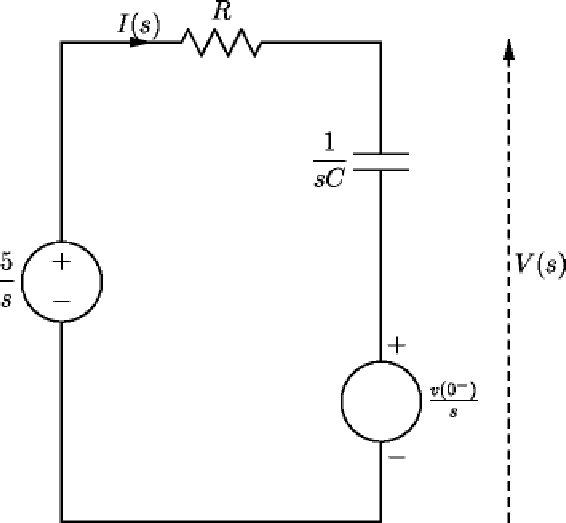




[ENGN2211 Home]
We re-draw the circuit of Figure 25 using s-domain quantities,
as shown in Figure 27.
Figure 27:
s-domain RC circuit.
 |
The capacitor current and voltage are related by
and so
I(s) = sC V(s) -C v(0-) .
Now applying KCL to equate this with the resistor current we get
Solving for voltage gives
 |
(27) |
Plugging in our numbers gives
 |
(28) |
with RC=1  s.
Notice that the voltage is a superposition
of two terms, one due to the source voltage,
and the other due to the initial condition.
s.
Notice that the voltage is a superposition
of two terms, one due to the source voltage,
and the other due to the initial condition.
Equation (28) gives the solution
voltage V(s) in the s-domain. We now work out the time domain
waveform v(t).
The second term in (28) transforms to
 |
(29) |
using the LT pairs table in §3.2.2.
The first term does not appear in the LT pairs table,
so we need to re-express it as a sum of terms in the table.
Using partial fractions, we have
which transforms back to
 |
(30) |
Combining (29) and (30)
we get
 |
(31) |
in agreement with (26).





[ENGN2211 Home]
ANU Engineering - ENGN2211

